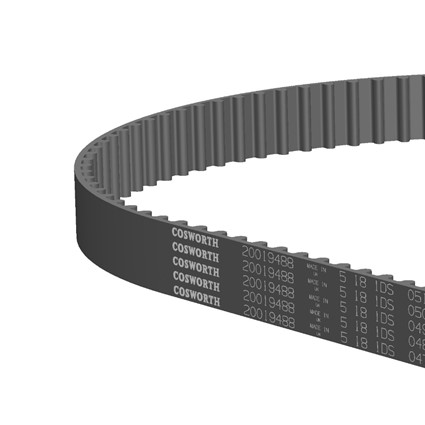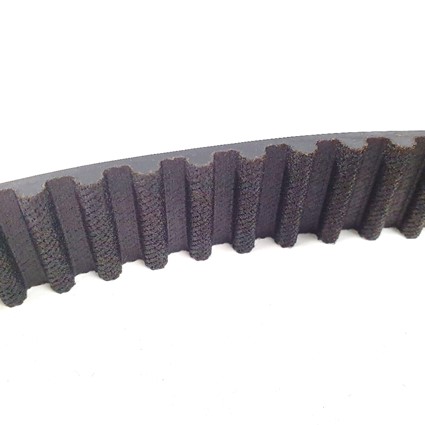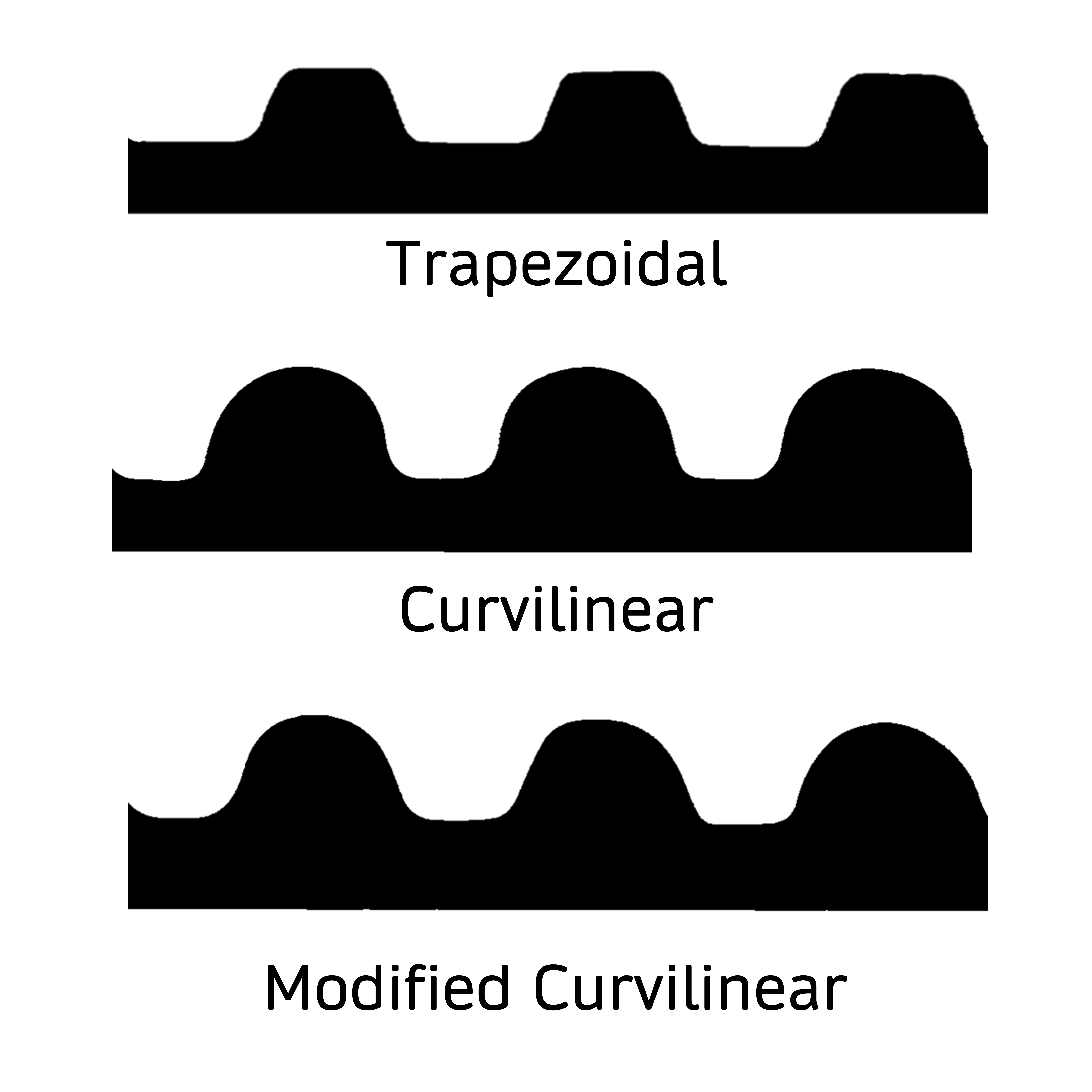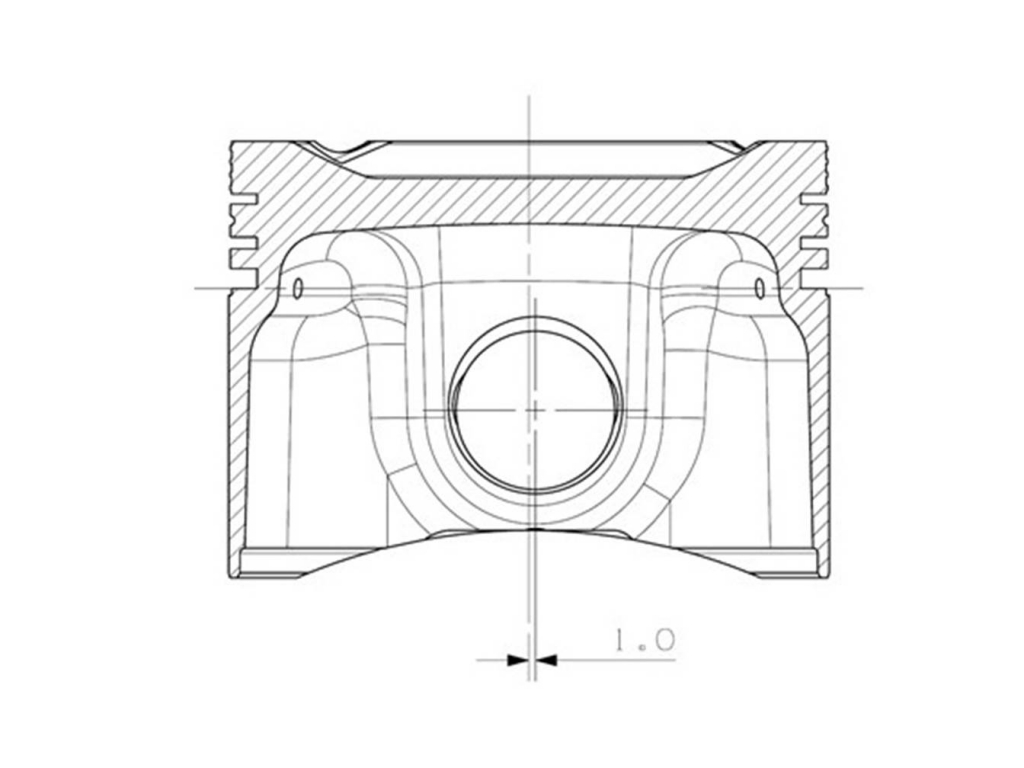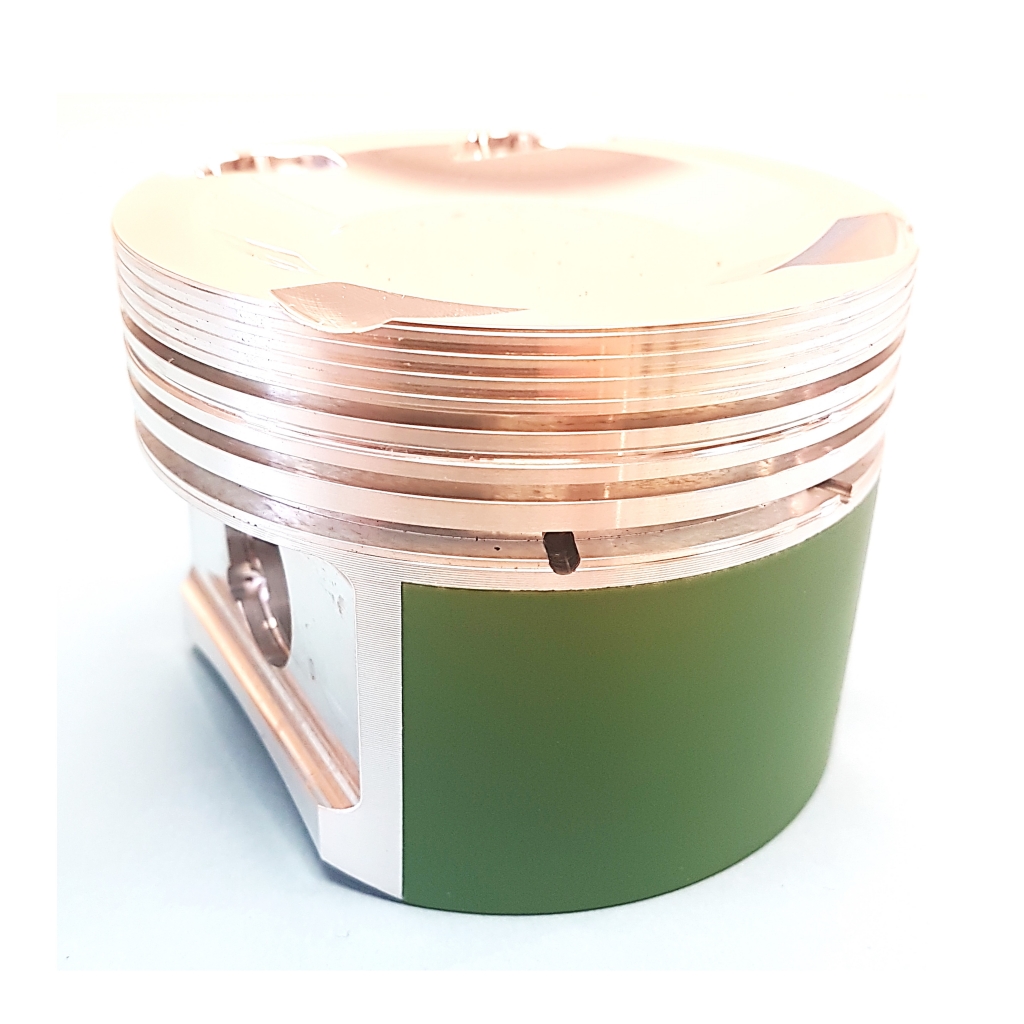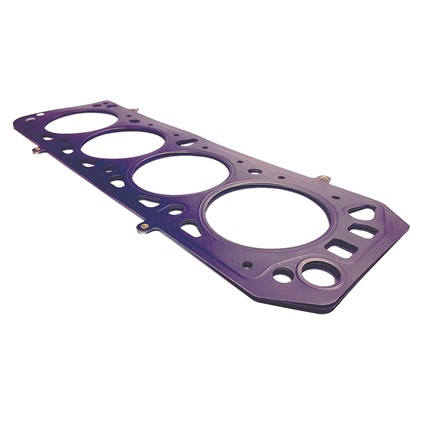A number of Cosworth pistons have what Cosworth refer to ‘piston anti-detonation bands’, but what actually are they? The term anti-detonation is perhaps a bit of a misnomer, as these bands don’t actually stop detonation. Instead, these bands mitigates the effects of detonation.
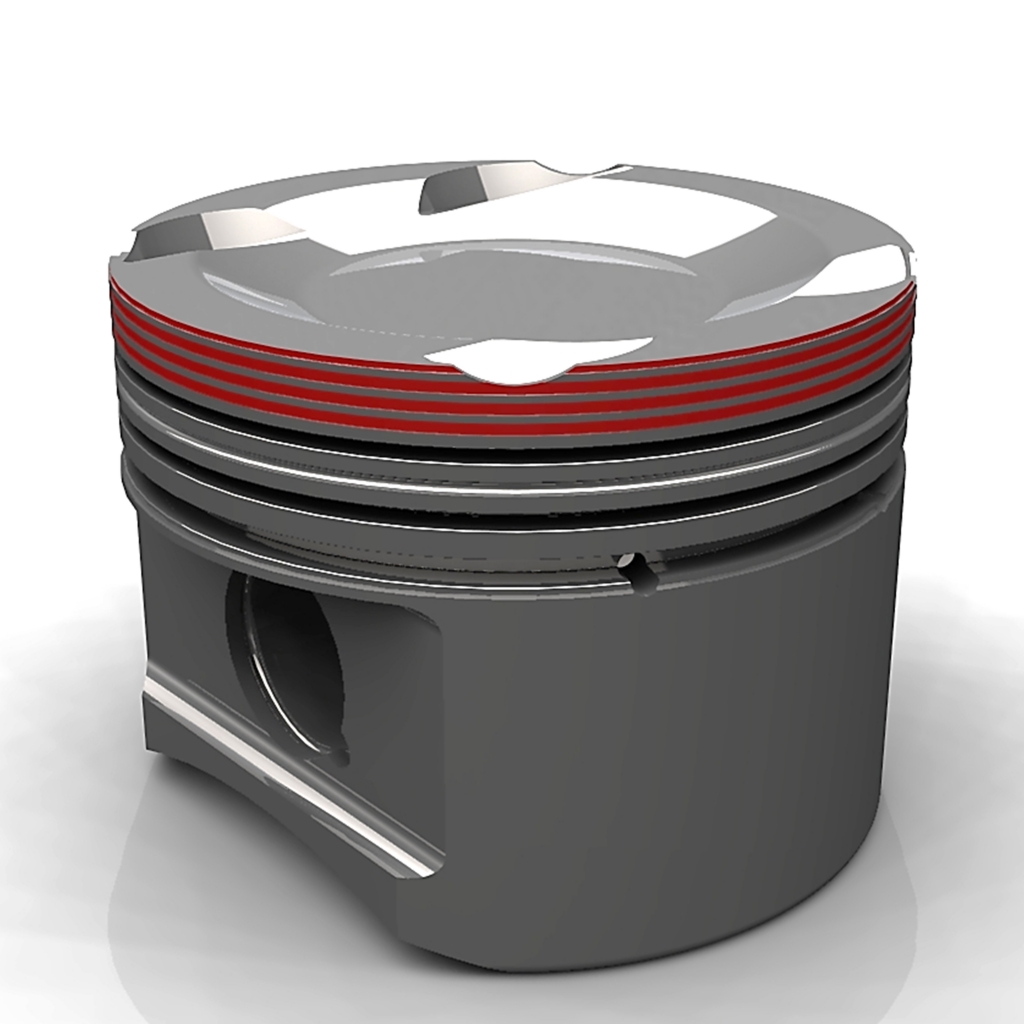
Understanding Detonation
Before we take a closer look at these bands, what actually is detonation? It’s a phenomena that is commonly mentioned in the world of high performance engines, but it does sometimes get used incorrectly. Detonation is broadly defined as unwanted or abnormal combustion. It occurs when both the temperature and the pressure in the unburnt mixture of air and fuel exceeds a critical level.
In a normal combustion event the spark plug will ignite the air/fuel mixture inside the combustion chamber. This happens before TDC whilst the piston is travelling upwards. The ignition of the air/fuel mixture creates a flame front that spreads outwards, igniting more of the mixture and leaving behind the burnt gases.
However, in certain circumstances when the temperature is hot enough, the unburnt mixture that is furthest from the spark plug (towards the wall of the cylinder) will ignite before the flame front reaches it. This unwanted and uncontrolled combustion can happen almost instantaneously, setting up strong pressure waves that hit the walls of the cylinder. These shock waves create the distinctive pinging noise that can be heard and indicate the presence of detonation.
Cosworth Anti-detonation Bands
In the early ‘90s, one step that Cosworth took to reduce the effects of detonation was to introduce anti-detonation bands. These grooves are located above on the top land above the top ring groove. They are typically around 0.2 mm deep and 1.25 mm wide. Most pistons will have two, three or four of these grooves, depending on the height of the top land.
But these shock waves can also be extremely destructive – they can inflict damage to the piston crown and in particular to the area around the top land. If detonation is severe then ultimately the piston will be irrevocably damaged, with the potential of engine seizure.
There are a number of Cosworth pistons that have anti-detonation bands, ranging from those for the YB through to some of the more recent Formula 1 engines. Basically, any engine that will experience high cylinder pressures will benefit from the usage of anti-detonation bands.
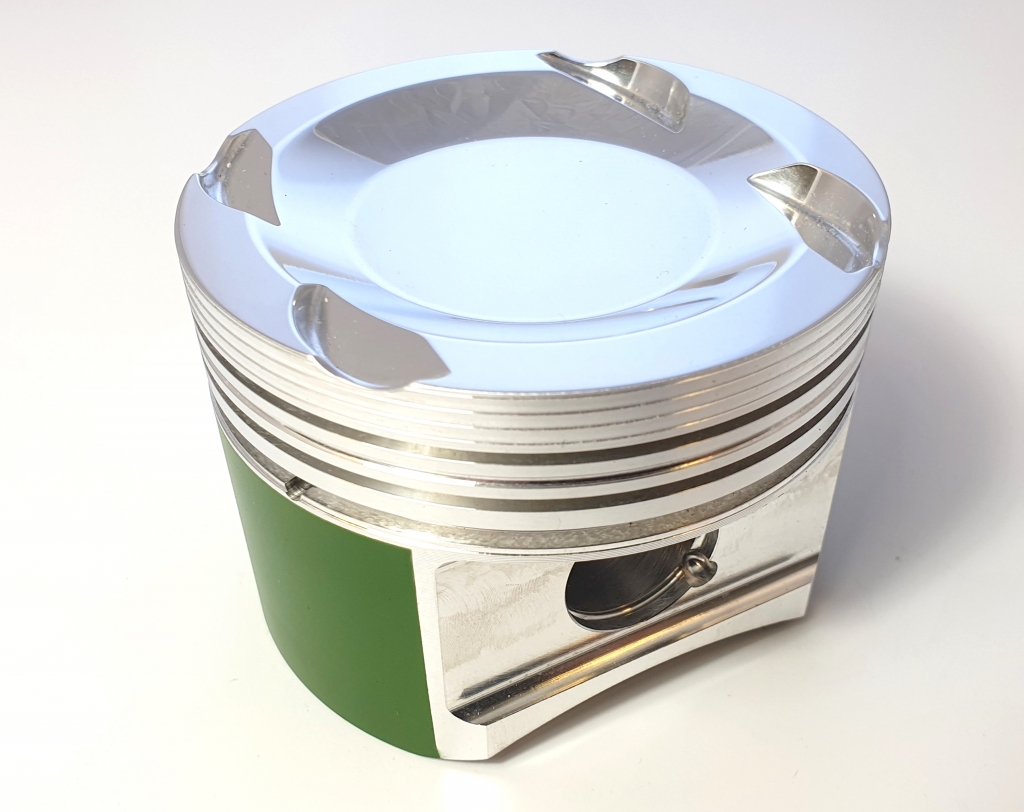
The aim of these bands is to protect the top ring by disrupting any high-pressure pulse waves from detonation. The volume within these grooves, although small, allows a space for additional atomisation of the fuel and air mixture. When detonation occurs, this extra space provides an outlet for the shock waves.
These bands also bring about a couple of additional benefits. Firstly, they can prevent the build-up of carbon above the top ring which would otherwise cause the ring to stick in the ring groove. Secondly, they reduce the amount of contact between the top land the cylinder bore wall. This makes them very beneficial at high engine speeds and piston temperatures. Hence they are also occasionally referred to as “contact reduction grooves”.
The introduction of anti-detonation bands by Cosworth was another example of their experience and understanding of internal combustion engines. Indeed, when owned by Vickers, Cosworth actually patented their anti-detonation band design in the US.
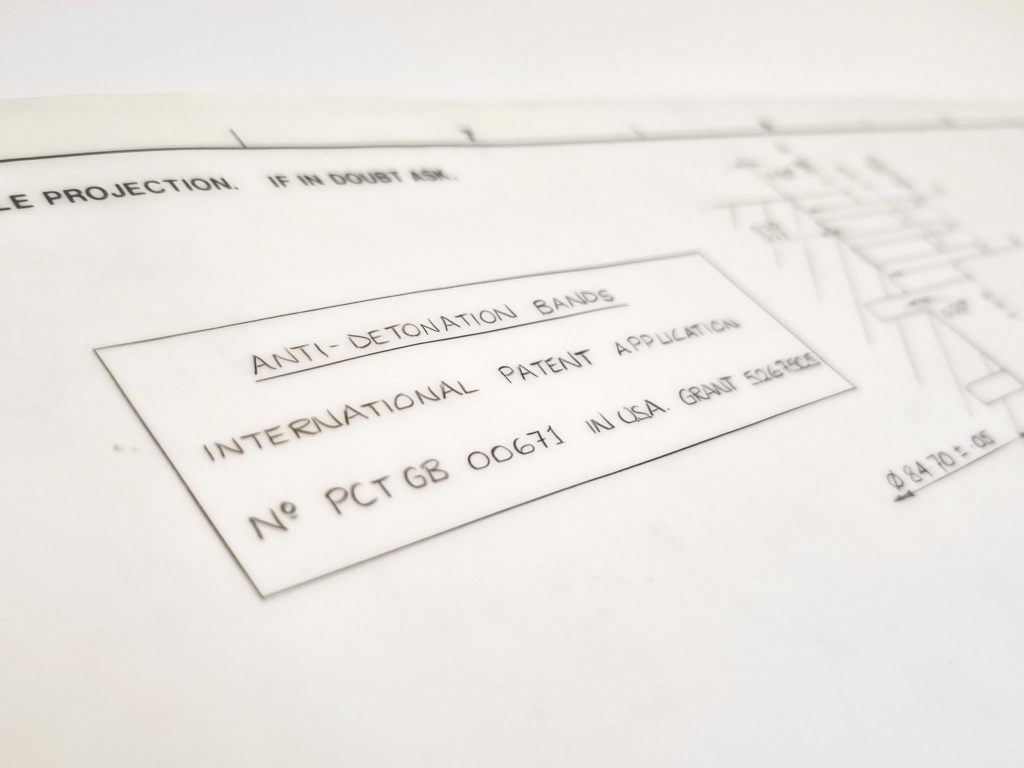
Want to know more about the range of Cosworth pistons that we supply? Then get in touch via our Contact Us page.

